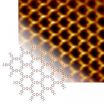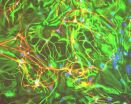Don't put all your eggs in 1 basket -- or all your horses on 1 pasture
2012-01-02
(Press-News.org) In Mongolia, extreme weather conditions – droughts followed by cold and snowy winters – occur at irregular intervals. However, the dzud of 2009/10 was the most extreme winter Mongolia had experienced in the past 50 years. Fifteen out of Mongolia's twenty-one provinces were declared disaster zones and over 7.8 million livestock, 17% of the national stock, are believed to have perished.
Przewalski's horses have been re-introduced intto Mongolia since 1992 and there are now free-ranging populations in Hustai National Park in central Mongolia and in the Great Gobi B Strictly Protected Area (SPA) in south-western Mongolia. Due to its special location at the fringe of the Dzungarian basin, flanked by high mountains, the Great Gobi B SPA received particularly high amounts of snowfall in the winter of 2009/2010. Most snow came with weather from the west and when the snow clouds hit the Altai Mountains on the eastern edge of the Great Gobi B SPA they discharged large amounts of snow, resulting in a strong east-west gradient in snow depth. The high, tightly packed snow made it hard for animals to gain access to the vegetation under the snow.
Herders in and around the Great Gobi B Strictly Protected Area were severely affected by the dzud and lost on average 67% of their livestock. Although herders are semi-nomadic, it was hard for them to escape the worst of the weather as competition for the available winter camps was high. Przewalski's horses were found to use three different winter ranges, two in the east and one in the west. Losses averaged 60% but mainly affected the groups wintering in the east, with the group in the west suffering almost no mortalities. As spatial use of Przewalski's horses is extremely conservative, groups did not attempt to venture beyond their known home ranges. In contrast, Asiatic wild asses seem to have suffered few losses. These animals roam over much larger areas than Przewalski's horses and are not restricted to any particular wintering areas. Petra Kaczensky, the first author on the PLoS paper, says that "wild asses were obviously able to outrun the worst of the dzud by moving west. The long-distance movements and shifts in range highlight how important it is to manage migratory or nomadic species on a landscape level, including multi-use areas outside of protected areas. Fragmentation of their range will reduce their flexibility and can easily result in local population crashes such as the one seen for the Przewalski's horses."
The severe effect of this localized catastrophic event was largely due to the small size and limited range of the present-day Przewalski's horse population. A large and continuous population would be much more robust as it could counteract local population lows or extinctions via re-colonization. The dzud winter of 2009/2010 is a textbook example of how vulnerable small and spatially confined populations are in an environment prone to fluctuations and catastrophes. Losses of this magnitude are difficult to model or predict. As long as populations remain small and spatially confined, their survival cannot be guaranteed, necessitating a long term conservation commitment to ensure the species' future. "The winter disaster really highlighted how dangerous it is to have all our eggs in one basket or in this case all the horses on a single pasture," says Petra Kaczensky. "The national strategy for Przewalski's horse conservation in Mongolia should continue to aim at multiple re-introduction sites with spatially dispersed populations. Ideally the sites should cooperate closely and if necessary also exchange animals on a national as well as international scale. Such steps have already been initiated in Mongolia and the recent downlisting of the Przewalski's horse in the IUCN Red List from 'critically endangered' to 'endangered' shows that this strategy is paying off." Generally, it is not feasible, either technically or financially, to breed and re-introduce all endangered species, as has been done for the Przewalski´s horse. Chris Walzer explains, "More promising strategies involve timely science-based measures to reduce threats to fauna and flora. These may include the establishment of protected areas but it is also important to maintain natural spaces and structures that make multi-purpose landscapes 'permeable' for wildlife, so that wide-ranging species can roam, as Asiatic wild asses tend to do".
INFORMATION:
END
ELSE PRESS RELEASES FROM THIS DATE:
2012-01-02
The new design is brighter, faster and more reader-friendly. "Because of our phenomenal growth over the past year, the original site design just couldn't cut it anymore," explains site designer and Zombie Ninja Assassin Kelly Karnetsky. "We've completely revamped the site, with a new logo, new sections and generally more badassery. The content that our readers want is now easier to find, easier to experience and easier to share."
FleshEatingZipper has been around for a year, and during that time the site has amassed over 2,500 comments on 1,000 articles. ...
2012-01-02
Chimpanzees, orangutans, gorillas and bonobos make more sophisticated decisions than was previously thought. Great apes weigh their chances of success, based on what they know and the likelihood to succeed when guessing, according to a study of MPI researcher Daniel Haun, published on December 21 in the online journal PLoS ONE. The findings may provide insight into human decision-making as well.
The authors of the study, led by Daniel Haun of the Max Planck Institutes for Psycholinguistics (Nijmegen) and Evolutionary Anthropology (Leipzig), investigated the behaviour ...
2012-01-02
TORONTO, Ont., Dec. 29, 2011 –More than two-thirds of paramedics surveyed have experienced verbal, physical or sexual abuse on the job, new research has found.
Verbal abuse by patients and their friends or relatives, Emergency Medical Service (EMS) co-workers or bystanders, was the most commonly reported, followed by intimidation and physical abuse, the study found.
"EMS providers can experience violence in the workplace as they perform their jobs in unpredictable environments and near people in crisis," said Blair Bigham, the lead investigator.
"Anecdotal reports ...
2012-01-02
Hollywood's most elaborate New Year's Eve Bash will be held at the world famous Kodak Theater Complex in the heart of Hollywood. The event boasts the Nation's largest Red Carpet New Year's Eve event filled with celebrities, live performances, DJ's and dancing as attendees will ring in the New Year high above Hollywood Boulevard as they take over the World Famous Hollywood & Highland Entertainment Complex including the Governors Ballroom where Hollywood's biggest stars party for the Oscars. Mario Lopez will host the red carpet and the countdown to 2012.
This year's ...
2012-01-02
Many animals produce alarm calls to predators, and do this more often when kin or mates are present than other audience members. So far, however, there has been no evidence that they take the other group members' knowledge state into account. Researchers from the Max Planck Institute for Evolutionary Anthropology in Leipzig, Germany, and the University of St. Andrews, Great Britain, set up a study with wild chimpanzees in Uganda and found that chimpanzees were more likely to alarm call to a snake in the presence of unaware than in the presence of aware group members, suggesting ...
2012-01-02
On Friday, January 6, 2012, the Tilted Kilt on The Avenue in White Marsh will be the site of a special night to honor our troops and raise funds for the Wounded Warrior Project. Hosted by Baltimore-Networking and PurpleFridays.com, the event will kick off with a business networking happy hour from 5 to 7 PM, followed by a Ravens celebration with silent auction from 7 to 9 PM with chances for attendees to walk away with prizes such as gift certificates to Baltimore restaurants, gift baskets, and Ravens items, including a framed autographed jersey!
The Wounded Warrior ...
2012-01-02
Even the costliest oriental carpets have small mistakes. It is said that pious carpet-weavers deliberately include tiny mistakes in their fine carpets, because only God has the right to be immaculate. Molecular carpets, as the nanotechnology industry would like to have them are as yet in no danger of offending the gods. A team of physicists headed by Dr. Markus Lackinger from the Technische Universität München (TUM) und Professor Thomas Bein from the Ludwig-Maximilians-Universität München (LMU) has now developed a process by which they can build up high-quality polymer ...
2012-01-02
January 6, 2012 - February 20, 2012 - Gallery KH
Landscapes: Bring the Light
Opening cocktail reception: Friday, January 6, 2012 5-8PM
Gallery KH is pleased to present Landscapes: Bring the Light a collection of gallery artists working in bright palettes in their exploration of the landscape. Bring the Light opens January 6, 2012 through February 20, 2012. An opening night cocktail reception is scheduled for Friday, January 6, 5-8PM. All gallery events are free and open to the public.
"The interesting thing about a group show is that you get to see how each ...
2012-01-02
Foreclosure Defense Seminar II: "Mortgage Securitization & Quiet Title"
January 7th, 2012 Las Vegas, Nevada
Register Online at http://www.CertifiedForensicLoanAuditors.com
Only $595 for the 1-Day Course
Seminar Speaker: Patricia Rodriguez, Esq. - Law Offices of Patricia Rodriguez
-Member of the State Bar of California
-Admitted in Central, Northern and Eastern Federal District Courts of California
-Temple University Law School - J.D.
-Temple University Law School - Law Program in Japan
-University of Southern California (USC) - B.S. ...
2012-01-02
Glia cells, named for the Greek word for "glue," hold the brain's neurons together and protect the cells that determine our thoughts and behaviors, but scientists have long puzzled over their prominence in the activities of the brain dedicated to learning and memory. Now Tel Aviv University researchers say that glia cells are central to the brain's plasticity — how the brain adapts, learns, and stores information.
According to Ph.D. student Maurizio De Pittà of TAU's Schools of Physics and Astronomy and Electrical Engineering, glia cells do much more than hold the brain ...
LAST 30 PRESS RELEASES:
[Press-News.org] Don't put all your eggs in 1 basket -- or all your horses on 1 pasture


